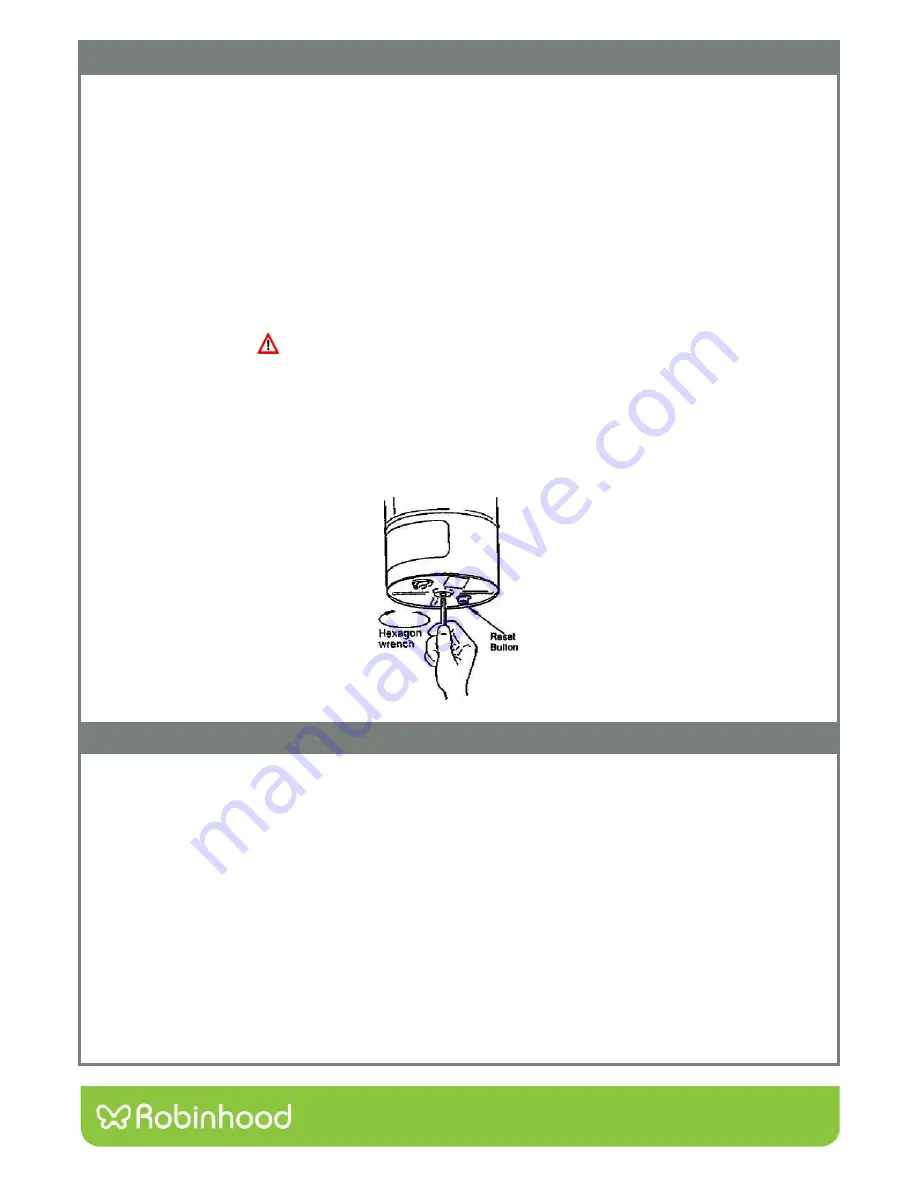
6
Operating instructions
1.
Remove the sink drain plug.
2.
Turn on the cold water to a medium-high flow, allowing the water to flow into the waste disposer.
3.
Turn on the waste disposer (Air switch if provided).
4.
Put all the food waste into the disposer while the disposer is operating and the water is running. Use the
extrusion attached to the drain plug to push the food down the disposer. Do not put your hand into the
disposer.
5.
Cut or break up large bones, rinds and cobs in order to speed up the waste disposal process. The
disposer may slow down while grinding in order to increase torque (grinding power) which is part of
normal operating conditions.
6.
Let the disposer continue to run for about half a minute after the grinding has stopped.
7.
Turn off your disposer (Air switch if provided).
8.
Turn off the water once the impellers have stopped spinning.
Safety features:
Your disposer is equipped with an overload protector which prevents the disposer from running should
it overload. Overload generally occurs when a foreign object has fallen into the disposer and jammed
the impellers, thus preventing the motor from turning. Overload may also occur if you have put too much
food waste into the disposer at a time. If overload occurs, turn off the disposer and remove the foreign
matter or food waste from the disposer. Insert the 8mm hex wrench supplied, into the opening at the
bottom of the motor shaft and rotate the tool clockwise. Wait five minutes before pushing the red reset button
on the bottom of the disposer. Then run water through the unit, switch it on and check for normal operation.
Cleaning and Maintenance
With normal usage your disposal should not require any special care.
1.
The motor is permanently lubricated and should not require oiling under normal usage conditions.
2.
If used according to the operating instructions above, your disposer should not require cleaning.
However, should it start to smell, grinding a tray of ice cubes in the disposer will help clean all the inner
components. Grinding a lemon, cut into quarters, will also give your disposer a fresh, clean smell.
3.
Mineral deposits resulting from stagnant water droplets may cause the appearance of rust on your
stainless steel turntable. However, the turntable is made of non corrosive material and will NOT rust.
4.
Spare plug seal is including in the packaging, this is not required until the unit starts to leak water
through the rubber seal. (In most situations this will not need replacing).











